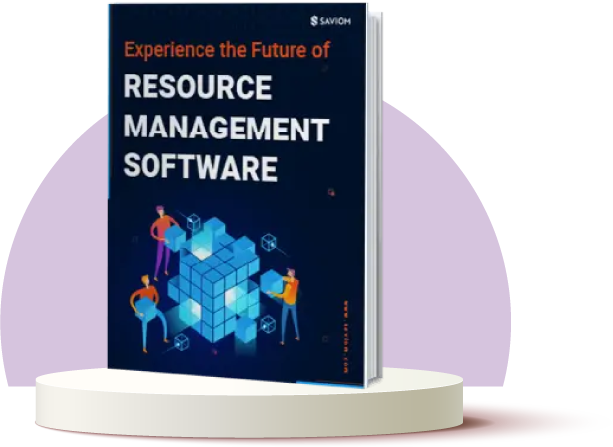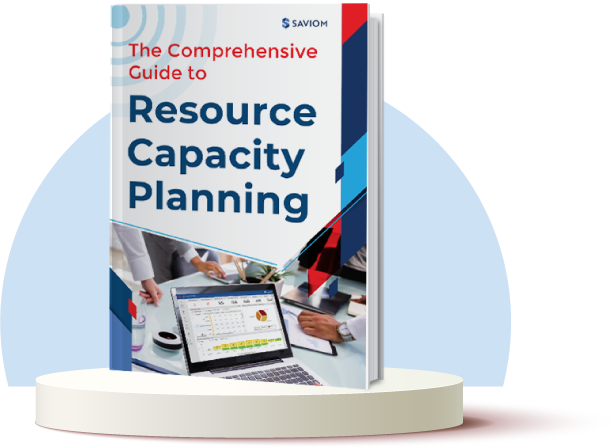According to a report by Deloitte, “The World Economic Forum predicts that by 2030, over a billion people will require reskilling”.
This staggering prediction serves as a wake-up call for organizations and individuals alike, stating that skill development is no longer a choice but a necessity for long-term survival.
As the demand for new skills arises continuously in this evolving market, firms must prioritize skill-building programs to ensure their workforce remains relevant and competitive.
Investing in skill development improves productivity rates, fosters innovation, enhances employee engagement, and helps build a resilient workforce. On the other hand, for individuals, it opens doors for new opportunities and career growth in the ever-changing competitive job market.
This blog explains everything about skill development, including the best strategies for building a future-ready workforce.
Let’s begin by understanding the definition of skill development.
What is Skill Development?
Skill development refers to a continuous process of acquiring, enhancing, or refining an individual’s wide range of skills, knowledge, and competencies for better performance and adaptability in the workplace.
This deliberate effort helps companies carry out complex job requirements seamlessly while promoting professional and personal growth. Firms can implement skill development in three ways-
- Upskilling – Enhancing existing skills to perform better in the current role
- Cross-skilling – Acquiring additional skills relevant to the current role
- Re-skilling – Learning entirely new skills to transition into a new role.
Now, there are three essential types of skills. Let’s look at it one by one.
Cognitive skills
In a workplace, cognitive skills include mental abilities like attention, memory, reasoning, and problem-solving. People with good cognition can think critically, process information, and adapt to changes quickly. This enables them to solve issues more efficiently and make informed decisions.
Technical skills
Technical skills encompass software proficiency, technical writing, DevOps, cybersecurity, cloud computing, and so on. A workforce with better hard skills efficiently executes complex tasks, troubleshoots issues, and can thrive better in the evolving market.
Interpersonal skills
Skills that include traits like teamwork, leadership, adaptability, and emotional intelligence are part of interpersonal or soft skills. People with strong interpersonal skills can build meaningful relationships, resolve conflicts effectively, and foster collaboration in diverse environments.
Now that we know what skill development is, let us move on to the benefits of skill development.
What are the Benefits of Skill Development?
Skill development is the cornerstone of staying competitive in an ever-changing job market. Without it, employees risk falling behind as job demands and industry standards evolve.
Let’s explore the key benefits of investing in skill development:
Improves Resource Utilization & Performance
Skill development helps firms equip employees with the right capabilities to handle and complete various tasks on time without any delays or inefficiencies. Further, during peak demands, skilled employees can be reassigned to balance workloads. Ultimately, skill development boosts productivity and ensures high-quality results.
Read More: What is Resource Utilization? A Complete Guide to Improve Business Efficiency
Keeps the Workforce Future-Ready
As technologies and market needs change rapidly, firms must continuously ensure their workforce is adaptable & well-prepared. Skill development equips employees with the knowledge and expertise to tackle emerging challenges and leverage new opportunities. This way, continuous learning ensures the workforce stays competitive and prepared for future demands.
Increases Employee Engagement & Retention
Employees value opportunities for professional growth and development. Providing access to skill-building programs demonstrates an organization’s commitment to its workforce, boosting morale and job satisfaction. This, in turn, fosters loyalty, reduces turnover, and creates a more engaged and motivated workforce, which is crucial for long-term organizational success.
Read More: Employee Retention KPIs: What are They, and Why Tracking Them is Crucial for Firms?
Encourages Innovation & Adaptability
A well-trained workforce is more likely to embrace change and think creatively. Skill development nurtures critical thinking and problem-solving abilities, empowering employees to innovate and adapt to evolving business environments. By fostering a learning culture, organizations create a ground for new ideas and approaches that drive growth and maintain a competitive edge.
Supports Succession Planning
By identifying and nurturing high-potential employees through training and development, companies prepare employees for future leadership roles. This ensures a smooth transition when key positions become vacant. For example, mentoring and upskilling mid-level managers helps them step into senior roles when needed, providing continuity and leadership stability within the organization.
Read More: 7 Effective Retention Strategies for Niche-Skilled Resources
Now that we know the importance of skill development in an organization, let’s delve into the next section that explains different ways to identify skill gaps.
Ways to Identify Skill Gaps in an Organization
An organization that does not address the skill gaps and find ways to bridge them is slowing down its success. Here are a few effective ways to identify skill gaps in an organization.
Training Needs Analysis (TNA)
Training Needs Analysis is a systematic process to identify gaps between current employee skills and those required for optimal performance. By evaluating job roles and employee capabilities, TNA pinpoints specific training areas. This way, organizations can determine the right training programs to bridge the gap.
Performance Reviews
Regular performance reviews provide insights into employees’ strengths and weaknesses. By analyzing employee feedback and performance metrics, managers can identify areas where additional training or skill enhancement is required, aligning individual growth with organizational objectives.
Read More: Traditional Performance Appraisals: Are They Still Relevant?
Skill Assessment Surveys
Skill assessment surveys directly gauge employees’ competencies in specific areas through self-assessments, quizzes, or tests. These surveys highlight gaps by comparing existing skills against required standards, offering a clear picture of where development efforts should focus.
Industry Trend Analysis
Keeping pace with evolving industry trends helps organizations identify emerging skills that will be critical for future success. By analyzing market demands and technological advancements, businesses can proactively address skill gaps to maintain competitiveness.
Skills Inventory and Mapping
Creating a comprehensive skills inventory helps catalog existing employee competencies across the organization. Skill mapping compares these against current and future requirements, highlighting areas where gaps exist and guiding targeted development initiatives.
360-Degree Feedback
360-degree feedback involves gathering input from an employee’s peers, subordinates, and managers to provide a holistic view of their performance and skills. This method identifies hidden gaps and offers actionable insights for development from multiple perspectives.
Read More: 7 Proven Ways to Give Constructive Feedback to Your Employees
Benchmarking
Benchmarking involves comparing organizational performance and employee capabilities against industry leaders or competitors. This process uncovers skill gaps by highlighting areas where the organization lags, enabling strategic workforce planning to meet or exceed industry standards.
Client Feedback
Client feedback can reveal gaps in employees’ customer-facing skills, such as project communication, problem-solving, or technical knowledge. Listening to clients’ experiences provides valuable insights into areas requiring improvement, ultimately enhancing service quality and customer satisfaction.
We now know the different ways to identify the skill gaps. This is followed by the section which elucidates the strategies to bridge the skill gaps.
10 Proven Skill Development Strategies to Bridge the Skill Gaps
Skill gaps can hold back growth, but the right strategies can help overcome them. Here are 10 of the best ways to develop skills effectively:
Identify Short & Long-Term Demands & Analyze Skill Gaps
Firms must first forecast and determine their immediate and long-term strategic demands. By understanding these demands, organizations can pinpoint the critical skills required for current and future success. Simultaneously, analyzing the existing skills of employees also helps to identify gaps.
Once the gap is identified, firms can implement continuous development programs like training or upskilling that prepare employees for upcoming challenges and opportunities. This way, firms can enhance the workforce’s ability to meet present objectives and build resilience for long-term growth.
Read More: What is Resource Forecasting? A Guide for Project Managers
Set up & Enhance Learning & Development Programs
Organizations should set up and invest in a Learning and Development (L&D) department, which can help them achieve business goals. This L&D department will be responsible for conducting formalized training and performance checks, ensuring effective onboarding and upskilling procedures.
In addition, they must ascertain continuous development in human capital. While technology advances and older systems become obsolete with time, the value of human capital declines. Thus, companies must invest in employee growth to build a future-ready workforce, motivating them to value opportunities to showcase their skills.
Create an Individual Development Plan (IDP) for Each Employee
The IDP helps managers understand the skill gaps, the employees’ professional goals, and strengths. As a result, managers can design personalized training and learning modules to provide realistic development plans to improve current job performance. However, IDP is not a one-time process; it is continuous.
Therefore, it is considered an ongoing partnership between a mentor and an employee. Mentors carefully assess the employee’s motivation for training, current skill set, and future goals to ensure the training aligns with the firm’s development needs. They offer continuous feedback to ensure training efforts yield positive outcomes.
Assign Suitable Mentors to Mentees
Pairing employees with experienced mentors fosters a supportive learning environment that accelerates skill development. Mentors provide personalized guidance, share practical insights, and help mentees overcome challenges. This hands-on approach builds technical expertise and enhances soft skills like communication and teamwork.
Moreover, mentorship helps create a culture of knowledge sharing within the organization. Senior employees can pass on their expertise, ensuring the transfer of institutional knowledge while developing leadership capabilities. This approach bridges skill gaps effectively and fosters long-term business growth.
Provide Cross-Training Opportunities
Cross-training employees equips them with a broader skill set, enabling them to step into multiple roles as needed and reducing project dependency on specific individuals. This flexibility ensures business continuity during absences or transitions, making the workforce more resilient.
Furthermore, cross-training encourages teamwork and innovation by exposing employees to diverse perspectives. It improves problem-solving abilities and empowers employees to contribute more meaningfully to organizational goals. For employers, cross-training offers a cost-effective way to bridge skill gaps while boosting employee engagement.
Encourage Self-Directed Learning
Providing access to e-learning platforms, webinars, and online courses empowers individuals to identify and address their skill gaps proactively. This approach fosters a culture of continuous improvement, where employees feel motivated to enhance their abilities in alignment with personal and organizational goals.
By promoting self-directed initiatives, organizations cultivate a mindset of lifelong learning that prepares employees to meet evolving industry demands. It’s a cost-effective strategy that aligns personal growth with the company’s strategic objectives.
Read More: How Can Employee Empowerment Enhance Productivity?
Implement Job Rotation Programs
Job rotation programs provide employees with hands-on experience in various roles, broadening their skill sets and deepening their organizational knowledge. This holistic exposure helps bridge skill gaps by allowing employees to learn through practical application rather than theoretical training.
Moreover, cross-functional exposure helps identify hidden talents and align employee strengths with organizational needs. Thus, job rotation promotes knowledge sharing, reduces skill gaps, and builds a more versatile workforce capable of taking on diverse opportunities.
Leverage External Experts and Consultants
Bringing in external experts and consultants provides access to specialized knowledge and industry insights that may not be available internally. These professionals can conduct tailored training sessions, workshops, or one-on-one coaching to address specific skill gaps.
Their expertise ensures employees receive the most up-to-date and relevant training, enhancing their proficiency in key areas. This approach helps improve efficiency, streamline processes, and stay competitive, ensuring long-term benefits and continuous growth.
Ensure Practical Exposure Post-Theoretical Training
While theoretical training builds foundational knowledge and conceptual understanding, practical exposure allows employees to apply what they’ve learned in real-world scenarios. Practical application, through methods such as on-the-job training, internships, shadowing, or project-based assignments, helps reinforce the knowledge gained.
Giving employees practical exposure also bridges the gap between theory and practice, making the training more effective. It ensures that employees are better prepared for their roles and can contribute meaningfully to the organization’s goals right away.
Develop & Maintain the Skill Competency Matrix
Managers can opt for an easy yet powerful visual tool to track and assess the current competencies of employees within the firm using a skill competency matrix. This can give an overview of where team members excel and where they need improvement or training.
Organizations can use a competency matrix to pinpoint specific skill gaps and take targeted action to address them. It also helps make better decisions around assigning roles, promotions, or filling positions, ensuring the right people are in the right roles at the right time.
Having covered strategies to bridge skill gaps, let’s shift focus to the differences between employee training and development.
The Difference Between Employee Training and Development
Understanding the difference between employee training and development helps organizations focus on immediate performance and long-term growth.
Here is a table listing all the key differences:
| Aspect | Development | Training |
|---|---|---|
| Focus | Long-term career growth and personal development | Short-term skill acquisition for specific tasks |
| Approach | Holistic and broad skill development | Specific and targeted skill improvement |
| Scope | Includes leadership programs, mentorship, and continuous learning | Includes workshops, courses, and on-the-job training |
| Goal | Prepares employees for future challenges and roles | Ensures employees are equipped for their current role |
| Timeframe | Ongoing and long-term focus | Immediate and job-specific |
Now, let’s see how resource management software helps make employee skill-building easier and more effective.
How Can Resource Management Software Help Streamline Employee Skill Building?
Modern resource management software plays a crucial role in tracking and evaluating workforce skills. It enables organizations to design precise skill development programs that enhance employee performance and drive sustainable success.
Here are the key benefits of using RM software for employee skill-building:
- The tool provides enterprise-wide visibility into the resource pool, highlighting key attributes such as skills, experience, and competencies. This enables managers to tailor Individual Development Plans (IDPs) and create effective skill-building strategies.
- Forecasting and Capacity planning features help managers predict future skill needs, enabling proactive skill development and ensuring employees are prepared for future roles.
- Seamless integration with email, calendars, and other enterprise systems ensures smooth communication with automated email triggers, updates, calendar alerts, and meeting invites, keeping everyone aligned during training sessions.
- The customized portals, dashboards, analytics, and reports offer real-time insights into training schedules of the trainers and resource utilization, enabling data-driven decision-making.
- This competency matrix tracks workforce skills and capabilities in real-time, allowing organizations to identify gaps and plan targeted training or hiring strategies to meet evolving demands.
Read More: Top 10 Business Benefits of Training Scheduling Software
Conclusion
In today’s fast-changing business landscape, skill development is the cornerstone of long-term success. Organizations that invest in upskilling their workforce not only enhance adaptability and innovation but also create a culture of growth and resilience.
So, the question is— are you prepared to take the leap and empower your workforce to build a stronger, future-ready organization?
The Glossary
Read More: Glossary of Resource Workforce Planning, Scheduling and Management











